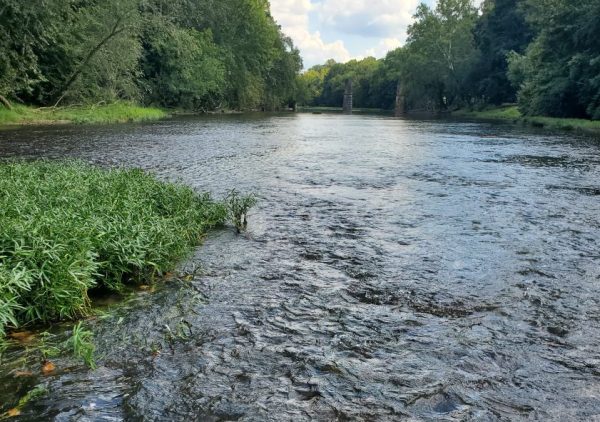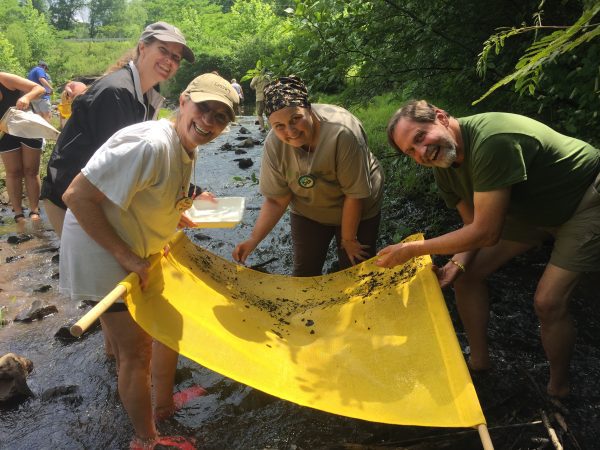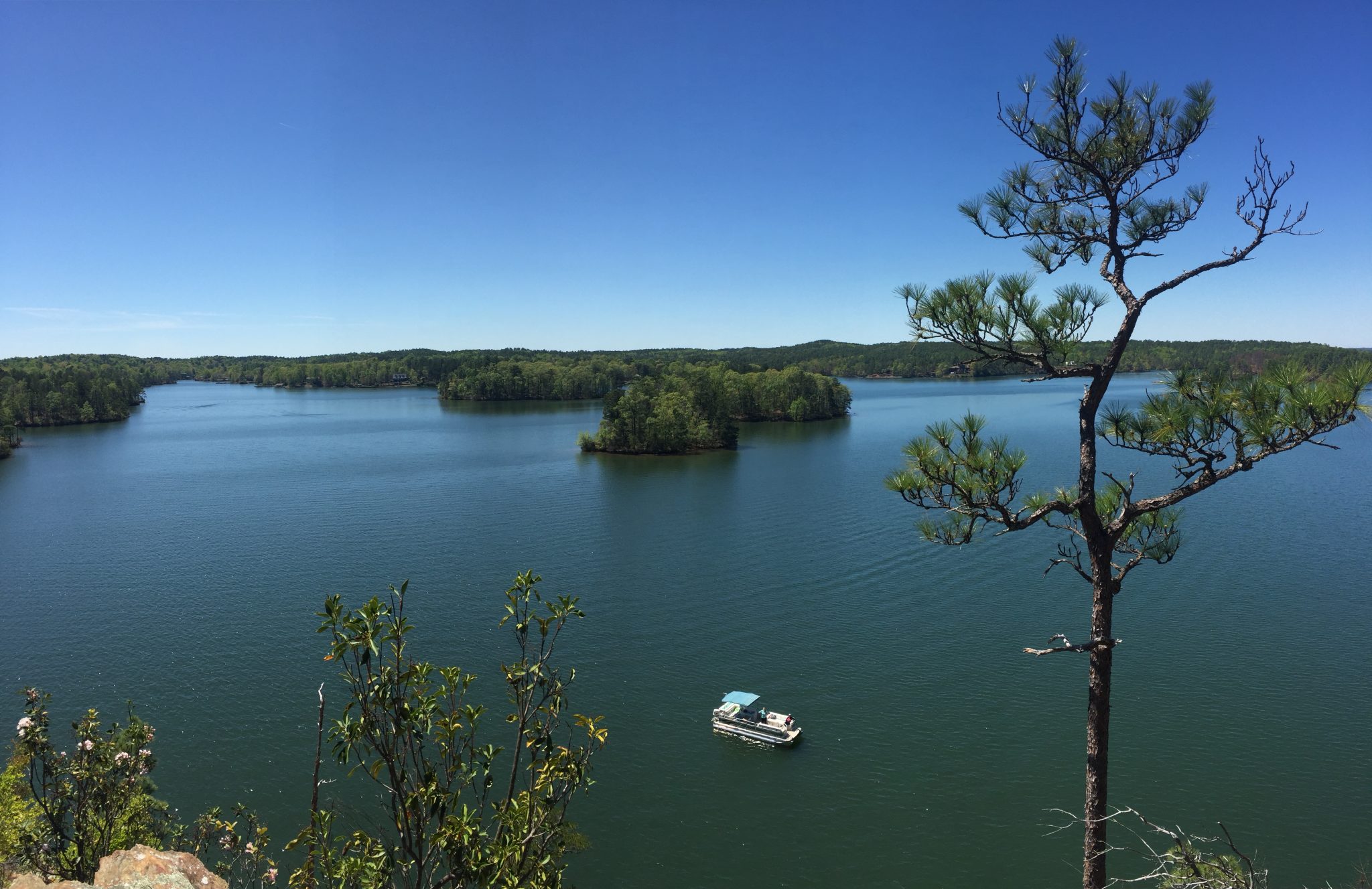Fish & Water

What is a watershed?
A watershed is an area of land through which rainwater drains by flowing across, through, or under the soil surface to a common low point–typically a stream, river, lake, or ocean. Each watershed is unique and experiences different land-use practices that may impact overall water quality. All of the land that drains water to a common point is considered to be in the same watershed. The health of a watershed and its water bodies depends on many factors such as surrounding vegetation, the use of the stream, the location of the water within the watershed, and much more. All people benefit from healthy watersheds, as they provide services like clean drinking water, outdoor recreation, and productive habitat for aquatic life.
Human activities on land can have an impact on the water quality of communities, leading to impaired waterways. This means that the water quality has become degraded to a point that the state environmental agency must report it to the United States Environmental Protection Agency (EPA). In Alabama, this agency is the Alabama Department of Environmental Management (ADEM). Impairments to waterways may be bacteriological (such as elevated levels of bacteria), physical (water temperature or total suspended solids), or chemical (nutrients, pH, etc.).
Once reported, the EPA can work with the state to restore and maintain the chemical, physical, and biological integrity of the nation’s waters.
How does water flow in my community?
Water that flows across the land typically runs downhill. As it travels across a landscape, the water may collect and carry sediment and pollutants that originated uphill in the watershed. It is important to know where you are located in your watershed, as this can influence the water quality characteristics of your area.
To understand your position in the watershed and learn more about community water issues, you can use the EPA’s How’s My Waterway website at mywaterway.epa.gov/. By using this tool, you can learn the basics about any state’s water, as well as more in-depth information about the waterways in your community. For concerns such as swimming, eating fish, and drinking water, water bodies are labeled as good, impaired, or condition unknown.
What may alter the water quality in my community?

Flint River
A healthy watershed has mostly natural land cover, especially near its waters; good water quality, quantity, and flow; and habitats that support aquatic life such as fish, water bugs, plants, and other animals. Different pollution sources and activities can impair waterways. Land use changes–such as the clear-cutting of forests for urbanization or filling wetlands to build homes–can alter water quality.
Even activities in your own home–like excessive fertilizer use, leaving pet waste near creeks and streams, and flushing medications–can have a negative impact on waterways. There are things you can do to improve watershed quality including the following:
- Installing a rain garden
- Reducing fertilizer and pesticide use near waterways
- Reducing water use with low flow appliances
- Cleaning up pet waste
- Avoid pouring chemicals down the drain
Why should I care about water quality?
Maintaining water quality is essential for the health of your family and community. Many cities rely on surface water–like lakes and rivers–for washing dishes, bathing, cooking, and drinking. While this water does get treated before reaching your faucet, your city may have a hard time treating highly impaired waters. Impaired waterways can be unsightly or even hazardous to use for fishing and swimming.
Those who get water from a well are responsible for monitoring and treating their own water. Poor watershed quality may lead to more serious health problems for these individuals.
What can I do to monitor water quality?
EPA’s How’s My Waterway Website
The EPA’s How’s My Waterway website mentioned above has a tool to help residents view information about their local waterways. Data can be viewed on a community, state, and national level. On a community level, users can find the following information:
- Water quality in your watershed
- Information on swimming, fish consumption, and aquatic life
- Restoration and protection efforts
- Permitted discharger information
- Identified issues (impairments and discharge violations)
- Local drinking water information
- Water monitoring information
Frequent monitoring is key to ensuring the safety and quality of Alabama watersheds. Water for recreational use and drinking water is monitored by ADEM, but testing a wide variety of smaller water bodies and streams can give people a better understanding of the overall water quality of the state.
Alabama Water Watch Monitoring Program

Alabama Water Watch volunteers pose while conducting a stream bioassessment.
Alabama Water Watch (AWW) is a citizen-science volunteer water quality monitoring program that covers all the major river basins of the state. The mission of Alabama Water Watch is to improve both water quality and water policy through citizen monitoring and action. AWW does this through the following:
- Educating people on water issues in Alabama
- Training people to use standardized equipment and techniques to gather credible water information
- Empowering people to make a positive impact by using their water monitoring data for environmental education, waterbody restoration and protection, and involvement in watershed stewardship
To get involved with AWW and test the water quality near you, become a volunteer monitor. Visit the AWW website aaes.auburn.edu/alabamawaterwatch/ to learn more about how to use equipment for water monitoring and become certified.

